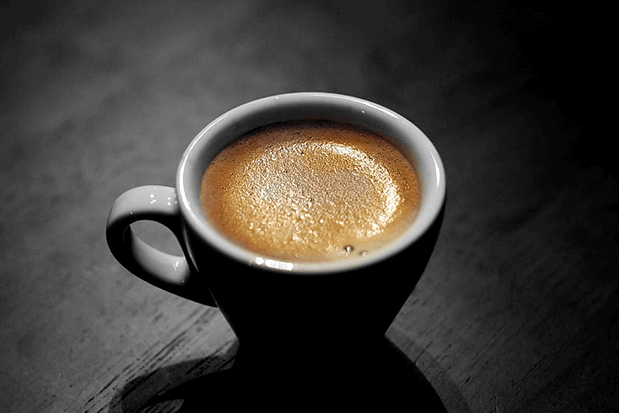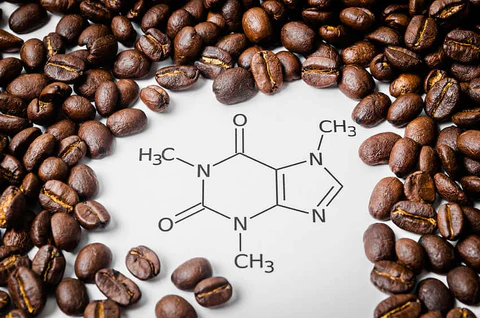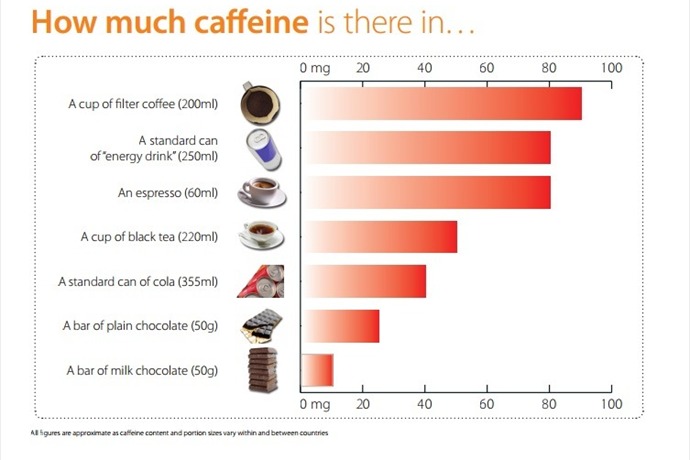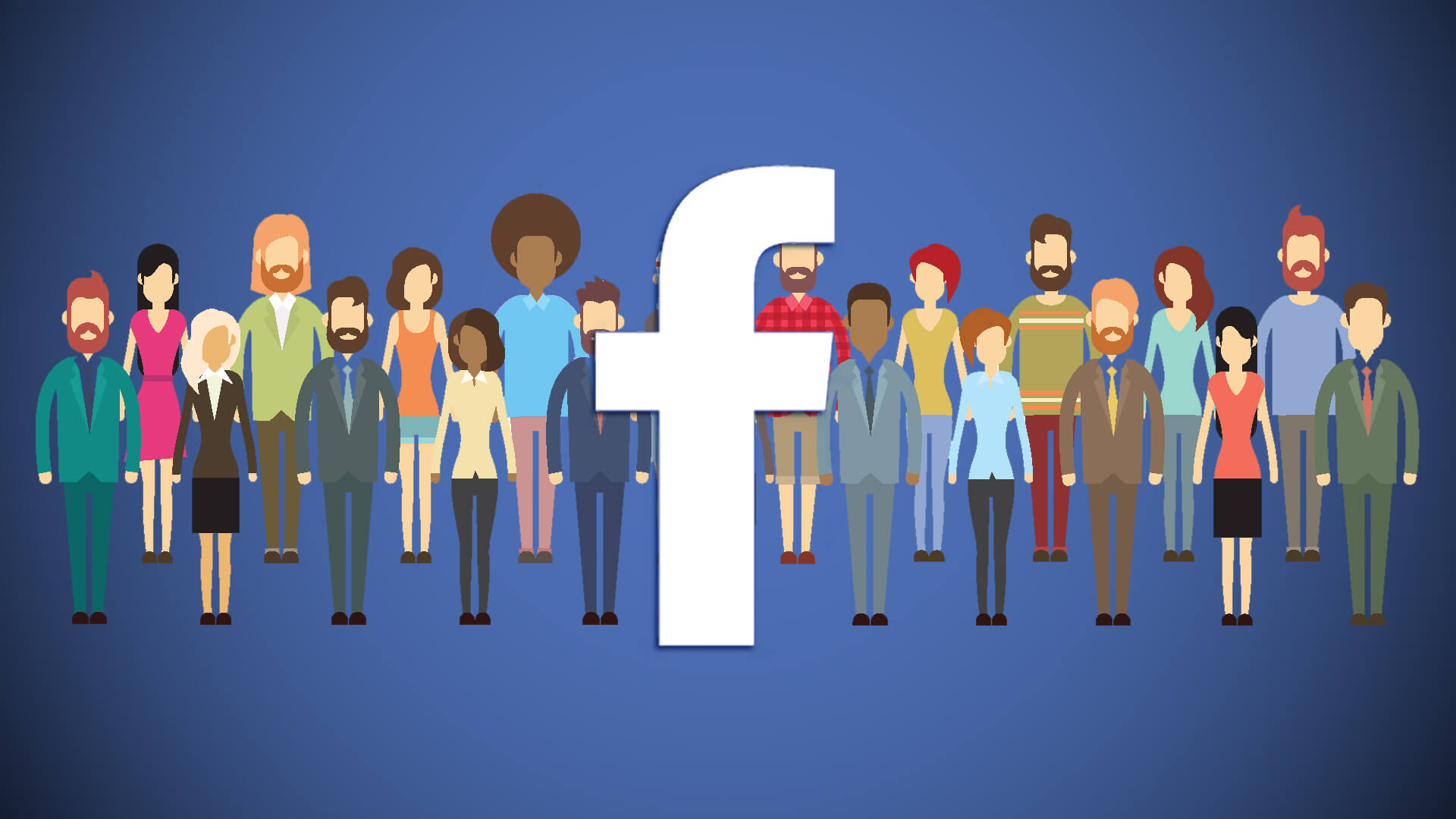
Coffee is one of the most popular beverages worldwide, and for many people, a shot of espresso is the perfect pick-me-up.
However, not all coffee is created equal, and caffeine content varies depending on several factors. Understanding these factors can help you make informed choices about your caffeine intake and prevent caffeine-related issues such as jitters, anxiety, and insomnia.
Why knowing the caffeine content of espresso matters
Knowing the caffeine content of espresso is essential for several reasons. First, it can help you regulate your caffeine intake, especially if you’re sensitive to caffeine or have medical conditions that don’t allow you to consume too much caffeine.
Second, it can help you understand coffee consumption’s potential benefits or risks. Research shows that moderate coffee intake may have some health benefits, such as reducing the risk of type 2 diabetes, Parkinson’s disease, and liver cancer.
On the other hand, excessive caffeine consumption can cause adverse effects, such as palpitations, high blood pressure, and dehydration.
Factors affecting caffeine content
Several factors can affect the caffeine content of espresso, making it difficult to determine an exact number. These factors include:
– The type of bean: Different varieties of coffee beans have varying caffeine content, with Robusta beans having more caffeine than Arabica beans.
– The type of roast: Coffee roasts range from light to dark, with dark roasts having less caffeine content due to the longer roasting time.
– The amount of coffee used: The more coffee you use, the higher the caffeine content.
– The preparation method: Different coffee preparation methods, such as the French press, drip, and espresso, have different caffeine levels due to varying extraction times and temperatures.
For instance, a single shot of Starbucks espresso, which measures 0.75 ounces, has 75 mg of caffeine. However, if you drink an 8-ounce cup of the same coffee shop’s medium-roast coffee, you’re getting 155 mg of caffeine. That means that although espresso has more caffeine per ounce, regular coffee has more caffeine per serving.
Stephen Schulman, an expert in the coffee industry, suggests that the quick consumption of espresso might contribute to the perceived stronger caffeine jolt. Regardless of the reason, understanding the caffeine content of your coffee or espresso can help you make mindful decisions about your caffeine consumption.
In conclusion, various factors can affect the caffeine content of coffee, making it challenging to determine exact numbers. However, understanding these factors and knowing the caffeine content of your coffee or espresso can help you regulate your caffeine intake and make informed decisions that benefit your health and wellbeing.
What is Espresso?

The origin of Espresso
Espresso is a concentrated form of coffee that originated in Milan, Italy in the early 20th century.
The word “espresso” means “pressed out” in Italian, referring to the coffee-making method. The first espresso machine was invented by Italian inventor Luigi Bezzera in 1901, and this simple machine allowed for a much faster and more efficient way of brewing coffee.
What sets Espresso apart from regular coffee
Espresso is made by forcing hot water through tightly packed, finely ground coffee beans using an espresso machine. The result is a small amount of highly concentrated coffee with a thick layer of crema on top. While espresso is made from the same beans as regular coffee, it has a significantly different flavor profile due to the unique brewing method.
One of the main differences between espresso and regular coffee is the amount of caffeine. Espresso typically has more caffeine per ounce than regular coffee, but most people consume a much smaller amount of espresso than they do regular coffee. This means that the amount of caffeine in a cup of espresso is usually less than that in a cup of coffee.
Another key difference is the flavor. Espresso is known for its bold, rich flavor and thick crema, which is a layer of foam that forms on top of the coffee. Regular coffee is brewed using a drip or pour-over method, which produces a milder flavor and a thinner mouthfeel.
Espresso is also used as the base for many coffee drinks, such as cappuccinos and lattes, and is often served in small portions (one or two ounces) rather than a full cup. This makes it a popular choice for those looking for a quick caffeine boost or a strong shot of coffee flavor.
In conclusion, espresso is a unique form of coffee with a distinct flavor and brewing method. While it is more concentrated and has a stronger flavor than regular coffee, it is typically consumed in smaller quantities and may not contain as much caffeine per cup. Whether you love the bold flavor of espresso or prefer a more mild cup of coffee, there’s no denying that espresso is a beloved staple of coffee culture around the world.
Understanding Caffeine
What is caffeine?

Caffeine is a natural stimulant that is found in many beverages and foods, including coffee, tea, soda, chocolate, and energy drinks. It works by blocking the action of a neurotransmitter called adenosine, which is involved in sleep and relaxation. This leads to increased alertness and a sense of wakefulness.
Caffeine is a popular ingredient in many products because of its ability to provide a quick jolt of energy. It is also commonly used as a performance enhancer in sports, as it can improve endurance and reduce fatigue.
How caffeine affects the body
The effects of caffeine on the body can vary depending on a number of factors, including the individual’s sensitivity to caffeine, the amount consumed, and the method of consumption. In general, caffeine can produce the following effects:
– Increased alertness and wakefulness
– Increased heart rate and blood pressure
– Increased production of stomach acid and digestive enzymes
– Diuresis (increased urine production)
– Reduced appetite
– Headache (with withdrawal)
Caffeine can also interfere with sleep, especially if consumed in large amounts or late in the day. It can take several hours for caffeine to be fully metabolized and eliminated from the body, which is why it is important to consume it in moderation and avoid consuming it close to bedtime.
In conclusion, caffeine is a natural stimulant that can provide a quick boost of energy and improve athletic performance. However, it can also have negative effects on the body, including interference with sleep and digestive issues. As with any substance, it is important to consume caffeine in moderation and be aware of its effects on the body.
How Much Caffeine is in a Shot of Espresso?
Average caffeine content in a shot of espresso
According to the Department of Agriculture nutrition data, a shot of espresso typically contains 63mg of caffeine in 1 ounce. However, some coffee shops like Starbucks measure their single shots of espresso at 0.75-ounce and pack 75mg of caffeine into it. Although espresso has more caffeine per ounce compared to regular coffee, it is typically consumed in smaller quantities as most people have one or two shots, making the caffeine content per serving less than that in a cup of coffee.
Why caffeine content is lower in espresso compared to regular coffee
One of the main reasons why the caffeine content in an espresso shot is lower than that of regular coffee is the difference in brewing methods. Regular coffee is brewed using a drip or pour-over method where hot water is slowly poured over the ground coffee, extracting caffeine over time in larger amounts. On the contrary, hot water is rapidly forced through tightly packed, finely ground coffee beans, which extracts less caffeine per serving and results in a smaller serving size.
Moreover, the roast profile and bean type also play a role. Often, espresso beans are darker roasted, resulting in less caffeine than beans that are lightly roasted for regular coffee as the heat breaks down the caffeine in the beans. However, this is not a rule of thumb, and having a light roast espresso bean with a higher caffeine content is possible than a dark roast regular coffee bean.
In conclusion, caffeine content in a shot of espresso is typically less than that of a cup of regular coffee, but it all depends on the variety of beans used, the roast profile, the serving size, and the brewing method. Despite having lower caffeine, the concentrated nature of espresso makes it a popular choice for a quick caffeine boost and its unique flavor profile.
Factors Affecting Caffeine Content in Espresso
Type of coffee beans used
The type of coffee beans used significantly impacts the caffeine content in an espresso shot. Espresso is made from Arabica and Robusta beans. Robusta beans have twice the caffeine content of Arabica beans, making an espresso shot made with Robusta beans twice as caffeinated as the one made with Arabica beans. However, Robusta beans have a distinct taste and aroma, which some coffee lovers might find unappealing. Therefore, most coffee shops use a blend of both types of beans to balance the taste and caffeine content in their espresso shots.
Brewing method
Espresso shots are brewed using a unique method that involves forcing hot water through a compacted puck of finely ground coffee beans.
The brewing process lasts for 20 to 30 seconds, which means that only a limited amount of caffeine is extracted from the coffee compared to other brewing methods such as drip or pour-over. Espresso shots typically contain between 30 and 100 milligrams of caffeine depending on the brew time, grind size, and pressure used during the brewing process.
Amount of water used
The amount of water used in the brewing process affects the caffeine content in an espresso shot. Traditional espresso shots are made using one ounce of water per shot, resulting in a caffeine content of around 63 milligrams. However, some coffee shops use up to 1.5 ounces of water per shot, increasing the caffeine content to 95 milligrams.
In summary, the caffeine content in an espresso shot is affected by several factors, including the type of coffee bean used, the brewing method, and the amount of water used. Espresso shots made from Robusta beans contain more caffeine compared to those made from Arabica beans. The unique brewing process of espresso results in a lower caffeine content compared to other brewing methods. The amount of water used in the brewing process can also impact the caffeine content in an espresso shot. Understanding the factors that impact the caffeine content in espresso shots can help coffee lovers make informed decisions about their caffeine intake.
Is Espresso Really Less Caffeinated Than Coffee?
Comparing caffeine content in espresso and regular coffee
When it comes to caffeine content, the answer to whether espresso is less caffeinated than regular coffee can be a bit complex. On average, a shot of espresso contains about 63 mg of caffeine per ounce, while regular coffee has 12 to 16 mg of caffeine per ounce. This means that ounce for ounce, espresso is more caffeinated than regular coffee. However, espresso is typically consumed in smaller amounts than regular coffee, with most people having one or two shots at a time. This results in a lower overall caffeine intake compared to a cup of coffee.
When comparing a standard serving size, say an 8-ounce cup, regular coffee contains more caffeine than a shot of espresso. For instance, an 8-ounce cup of Starbucks’ Pike Place medium-roast coffee has 155 mg of caffeine, while a single shot of espresso at Starbucks contains only 75 mg.
The myth of espresso being less caffeinated
The idea that espresso is less caffeinated than coffee is a myth. The misconception may stem from the fact that espresso is typically consumed in much smaller amounts than regular coffee, leading to a lower overall caffeine intake. Additionally, some people believe that the deep, rich flavor of espresso is caused by the use of darker roasted beans, which they assume are lower in caffeine. However, the roast profile and bean type are not the only factors affecting coffee’s caffeine content.
One of the main reasons espresso contains less caffeine than regular coffee is the difference in brewing methods. Espresso is brewed under high pressure and hot water is rapidly forced through finely ground coffee beans, extracting less caffeine per serving. In contrast, regular coffee is brewed using a drip or pour-over method where hot water is slowly poured over the ground coffee, extracting caffeine over time in larger amounts.
In conclusion, the myth that espresso is less caffeinated than regular coffee is just that, a myth. Although espresso contains more caffeine per ounce compared to regular coffee, it is typically consumed in smaller amounts, leading to a lower overall caffeine intake. The caffeine content in coffee is influenced by various factors such as the roast profile, bean type, brewing method, and serving size, and it is up to individuals to decide which type of coffee suits their preferences and needs.
How Much Espresso is Safe to Drink?
Health recommendations for caffeine intake
According to the American College of Obstetricians and Gynecologists, it is recommended that individuals keep their caffeine intake to 200 milligrams per day or less. This means that an average espresso shot of 63 mg of caffeine per ounce should be limited to a maximum of three servings per day. The Food and Drug Administration (FDA), on the other hand, suggests that most adults can safely consume up to 400 milligrams of caffeine per day or the equivalent of four eight-ounce cups of brewed coffee. However, pregnant women are advised to limit their caffeine intake to no more than 200 milligrams per day.
The impact of excessive caffeine consumption
Excessive consumption of caffeine can have negative effects on an individual’s health. According to the Mayo Clinic, common side effects of too much caffeine consumption include nervousness, restlessness, insomnia, and increased heart rate. In some cases, excessive caffeine intake may lead to more serious health problems such as high blood pressure, gastrointestinal problems, and muscle tremors.
While there is no set maximum for the amount of espresso an individual can consume, it is important to be mindful of caffeine intake and to adhere to health recommendations. In addition, individuals should also consider the other sources of caffeine they consume throughout the day, including tea, soda, and energy drinks.
It is essential to pay attention to one’s own sensitivity to caffeine and adjust consumption accordingly. Consuming too much caffeine can result in unpleasant side effects and affect one’s overall health. As such, it is necessary to exercise moderation when consuming espresso or any other caffeinated beverage.
Alternatives to Espresso
Espresso is a popular coffee beverage, but not everyone enjoys the strong flavor or high caffeine content. Luckily, there are a variety of other options for coffee lovers to enjoy.
Other sources of caffeine
If you’re looking for a caffeinated beverage but don’t enjoy the taste of espresso, there are other options available. Here are a few to consider:
- Drip coffee – This is the most common type of coffee, brewed using a drip or pour-over method. It has a more mellow flavor compared to espresso.
- Americano – This is a diluted espresso shot with added hot water. It has a similar caffeine content to regular coffee but with a stronger flavor.
- Cold brew – This is a sweeter, less acidic, and less caffeinated type of coffee made by steeping coffee grounds in cold water for an extended period of time.
- Tea – Some types of tea, such as black and green tea, contain caffeine and can be a good alternative for those who want a lower caffeine content than coffee.
Non-caffeinated options
If you’re looking for a non-caffeinated beverage, there are plenty of delicious options to try. Here are a few:
- Herbal tea – This is a tea made from herbs, fruits, and flowers, and is caffeine-free. It comes in a variety of flavors and can be a soothing alternative to coffee.
- Hot chocolate – A warm and indulgent beverage, hot chocolate is made from cocoa powder, sugar, and milk. It’s a great choice for those who want a sweet treat without caffeine.
- Fruit juice – This is a refreshing and healthy alternative to coffee. It’s low in calories and packed with vitamins and antioxidants.
- Smoothies – A smoothie made with fresh or frozen fruits and vegetables can be a tasty and nutritious replacement for coffee.
In conclusion, there are many alternatives to espresso for those who don’t enjoy its strong flavor or high caffeine content. From drip coffee to herbal tea, there are plenty of options available to suit all tastes and preferences. Whether you’re looking for a caffeine boost or a non-caffeinated option, there’s a drink out there for you to enjoy.
Conclusion
Espresso is a popular coffee beverage, but not everyone appreciates the strong flavor or high caffeine content. Fortunately, there are plenty of alternatives to consider, ranging from drip coffee to herbal tea, hot chocolate, fruit juice, and smoothies. With so many options available, there is a drink for everyone to enjoy.
The importance of understanding caffeine content in espresso
It is important to note that while a shot of espresso contains nearly twice as much caffeine per ounce than regular drip coffee and four times more caffeine than a standard energy drink or soda, an 8-ounce cup of brewed coffee contains a total of 96mg of caffeine, surpassing that of a single shot of espresso. Therefore, it’s important to understand that the caffeine content of an espresso can vary depending on factors such as the type of beans used, the roast level, and the brewing method.
Summary of key points and takeaways
To sum it up, here are the key takeaways from this discussion on alternatives to espresso:
- For those who do not enjoy the strong flavor or high caffeine content of espresso, many other options are available, including drip coffee, Americano, cold brew, tea, herbal tea, hot chocolate, fruit juice, and smoothies.
- The caffeine content in espresso can vary depending on the type of beans used, the roast level, and the brewing method.
- It is important to understand the caffeine content of different coffee drinks and to choose beverages that suit your taste preferences and caffeine tolerance.


